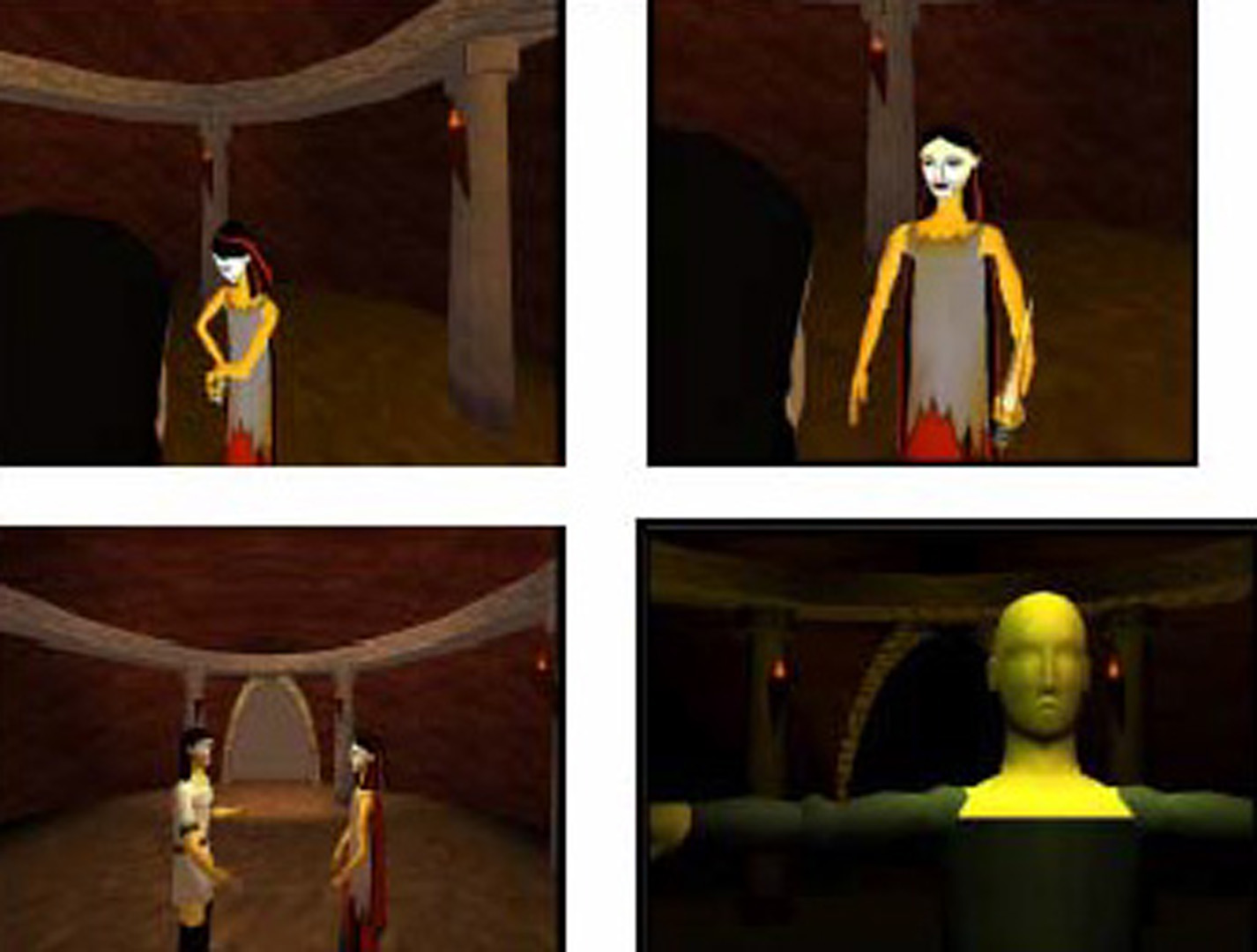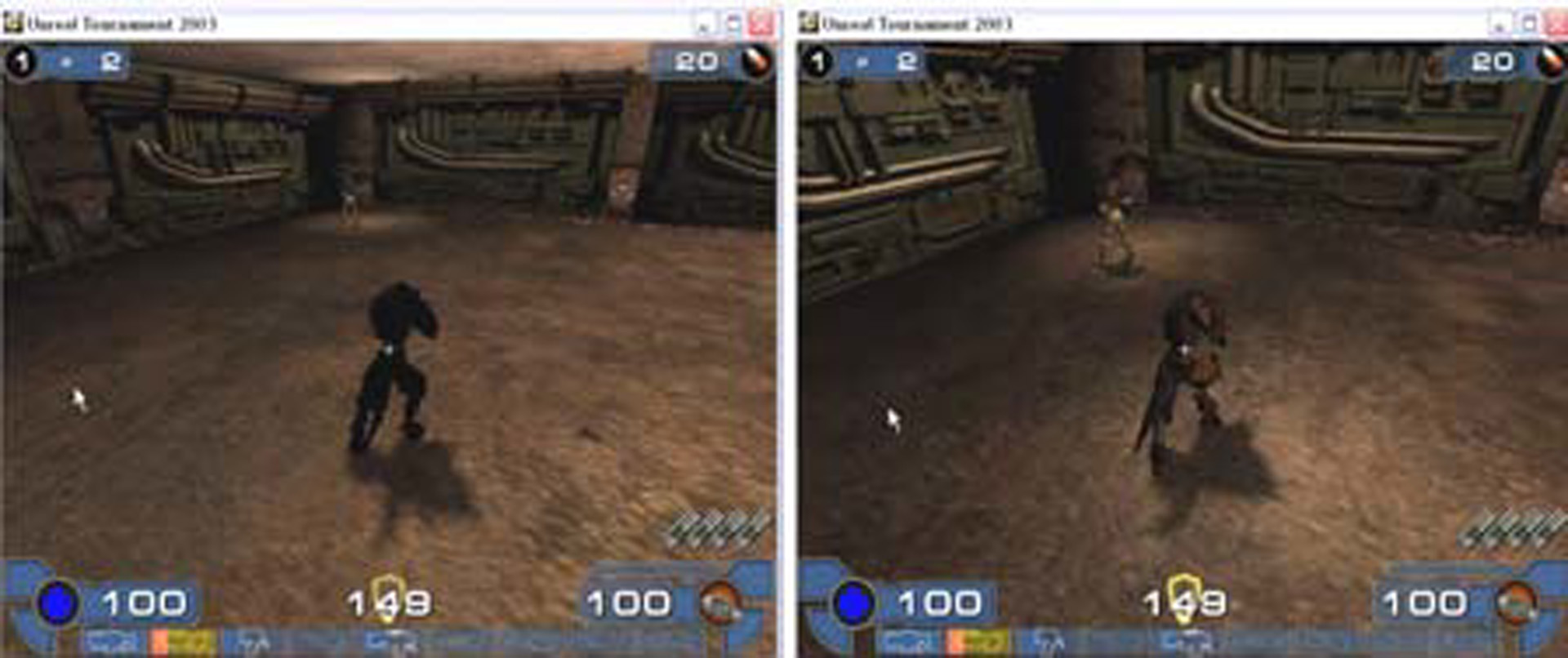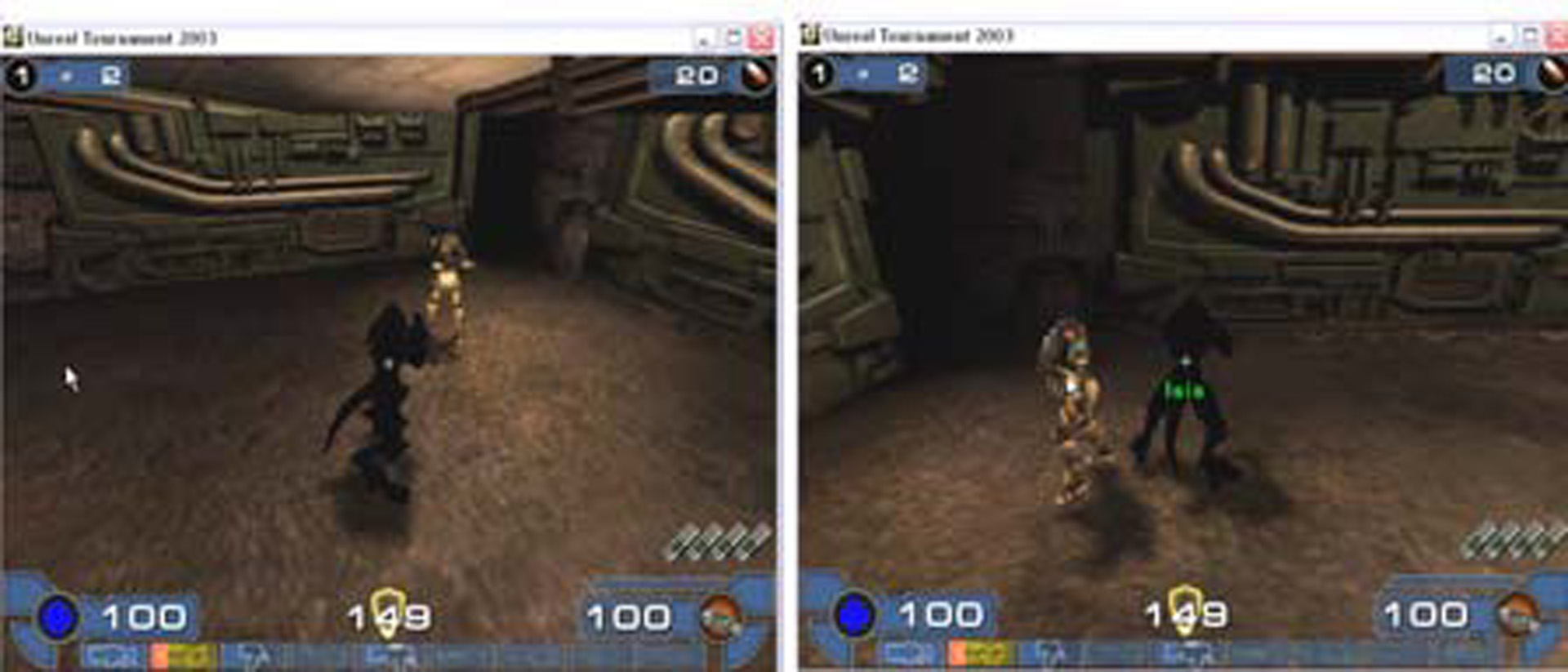“Visually Directing User’s Attention in Interactive 3D Environments” by El-Nasr and Rao
Conference:
Type(s):
Title:
- Visually Directing User’s Attention in Interactive 3D Environments
Presenter(s)/Author(s):
Entry Number: 082
Abstract:
Lighting is a very important component of 3D environment design. Research efforts in perception, neuroscience, animation, and film have shown the importance of visual design (a term used to denote lighting, camera motion, and staging design) in guiding participant’s attention to important elements in a scene [Block 2001, Bollmann et al. 1997, Calahan 1996, Navalpakkam and Itti 2002, and Treisman et al. 1980]. Neuroscience and psychophysics literature identified several visual attention features: contrast, eccentricity, symmetry, and motion [Treisman et al. 1980, Navalpakkam and Itti 2002].
Cinematic and theatric lighting designers continuously modulate scene lighting to accommodate several design goals, including direct audiences’ attention towards important areas in a scene, establishing visibility, evoking moods, and setting atmosphere [Block 2001]. A similar method for controlling and modulating lighting is required for interactive 3D environments. Currently most games use static set-based lighting approach, which does not accommodate the dynamic and unpredictable nature of interactive environments.
References:
1. B. Block. 2001. The Visual Story: Seeing the Structure of Film, TV, and New Media, New York: Focal Press
2. M. Bollmann, R. Hoischen, and B. Mertsching. 1997. Integration of Static and Dynamic Scene Features Guiding Visual Attention. Berlin: Springer.
3. S. Calahan. 1996. Storytelling through lighting: a computer graphics perspective. Siggraph Course Notes.
4. V. Navalpakkam and L. Itti. 2002. A Goal Oriented Attention Guidance Model, Lecture Notes in Computer Science, vol. 2525, pp. 453–461.
5. Magy Seif El-Nasr and Ian Horswill. To appear. Automatic Lighting Design for Interactive Entertainment. ACM Computers in Entertainment.
6. M. Treisman and G. Gelade. 1980. A Feature-integration Theory of Attention, Cognitive Psychology, vol. 12, pp. 97–136.







